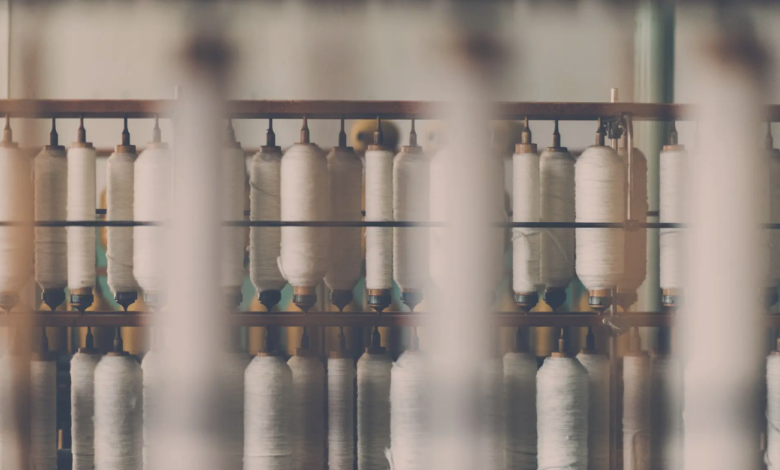A guide to the decarbonisation of the textile industry

The Sustainable Apparel Coalition has launched its Guide to the Decarbonisation of the Textile Industry, a tool to support its members in achieving SBT (Science Based Targets) scientific goals.
The coalition proposes itself as the coordinator of a global network that brings together about half of the textile, clothing and footwear industry, sectors particularly harbingers of climate impacts and therefore, to be directed towards a path of emission reduction to achieve the decarbonisation targets required by the scientific world.
To this end, the network launches its Guide, which designates a six-stage process for organisations that enables them to develop an action plan to achieve individual objectives.
Amina Razvi, Chief Executive Officer at the Sustainable Apparel Coalition, said: “Right now, the textile and apparel industry is not on track to hit net zero by 2050. We need urgent transformation and increased collaboration across the industry to tackle the worst impacts of climate change. The launch of our Decarbonization Guide is a major step in our efforts to create an aligned pathway for the industry to reduce GHG emissions. We believe through continued collaboration and partnership with organizations such as the Science Based Targets initiative, we can support our members to commit and set their science-based targets and work collectively to deliver on emissions reduction targets.”
The decarbonisation path of the textile industry
The textile industry is under the spotlight of those who look at the need for a process of decarbonisation of the economy: responsible every year for a share of emissions that is between 2 and 8%, the sector is currently required to reduce its climate impacts by at least 45% so that the target of containing global warming by 1.5°C is still achievable.
read also Sustainability of the fashion industry: we are not
As part of the process of decarbonisation of the textile industry promoted by the Guide, interested organizations must receive approval upon their entry into the network and their objectives; after the Coalition ok they will have six months to develop their own action plan and implement their own actions, in which there will have to be short-term goals (24 months) emissions reduction in line with the requirements of the international scientific community: targets must have been validated by an accredited third-party organisation.
This path will be supported by the guide, which provides useful resources for the set of plans and is one of several tools provided by the SAC to its members, such as webinars and Peet-to-peer learning sessions. The goal remains the decarbonisation of the textile sector, with a focus on the development of solutions born from collaboration between the different actors.
The Coalition has worked to elaborate the needs and expectations of the sector thanks to the collaboration of Michael Sadowski, one of themain authors of Apparel and Footwear Sector Science-Based Targets Guidance.
“Through the Decarbonization Program, we are enabling collaboration between brands and manufacturers to address one of the biggest challenges the industry faces: how to reach net zero. With the textile and apparel industry being so far away from reaching net zero by 2050, the need for urgent action has never been greater. This Guide is a critical marker on that journey and will empower member organizations to turn purpose into practice to deliver necessary impacts, starting from understanding and adopting targets in line with the best available science to developing action plans to take collective actions. 77% of our members participating in our decarbonization program told us that they want to share knowledge, resources and tools that are available to them to set science-based targets is their biggest priority. By giving the industry the guidance, tools and platform it needs to change, brands and manufacturers are equipped to tackle the urgent challenge of emission reductions and drive systemic change across the industry”, said Joyce Tsoi, Director of Collective Action Programs, at the Sustainable Apparel Coalition.
The science-based decarbonisation objectives
Among the actions implemented by SAC is the Science Based Targets (SBT) initiative, dedicated to accelerating the achievement of scientific goals around the world. The annual report on the adoption of SBT was presented last November in Singapore, at the SAC Annual Meeting, together with the SBT guide.
The objective of the Coalition is to build the contribution of the textile sector to the mitigation of climate change through a defined and precise process of decarbonisation, as illustrated by Luiz Amaral, CEO of the Science Based Targets initiative (SBTi), said: “When it comes to tackling the biggest problem the world has ever seen – climate change – we must draw on the power of collaboration, ambition and innovation. This new guidance is proof that the fashion industry is up to the challenge. It also provides a blueprint for other sector trade bodies to follow. To keep 1.5°C within reach, remain economically competitive and enable the transformation to a global net zero future, setting science-based targets is the crucial first step. I am looking forward to this collaboration driving countless companies to set ambitious climate goals and deliver tangible emission reductions in line with science.”





